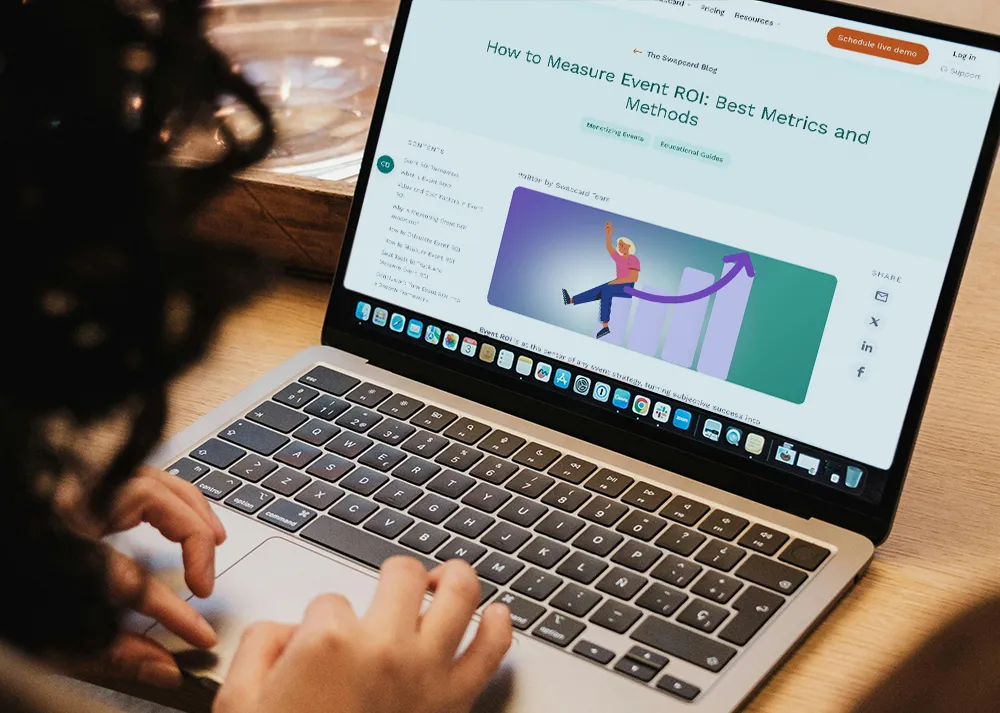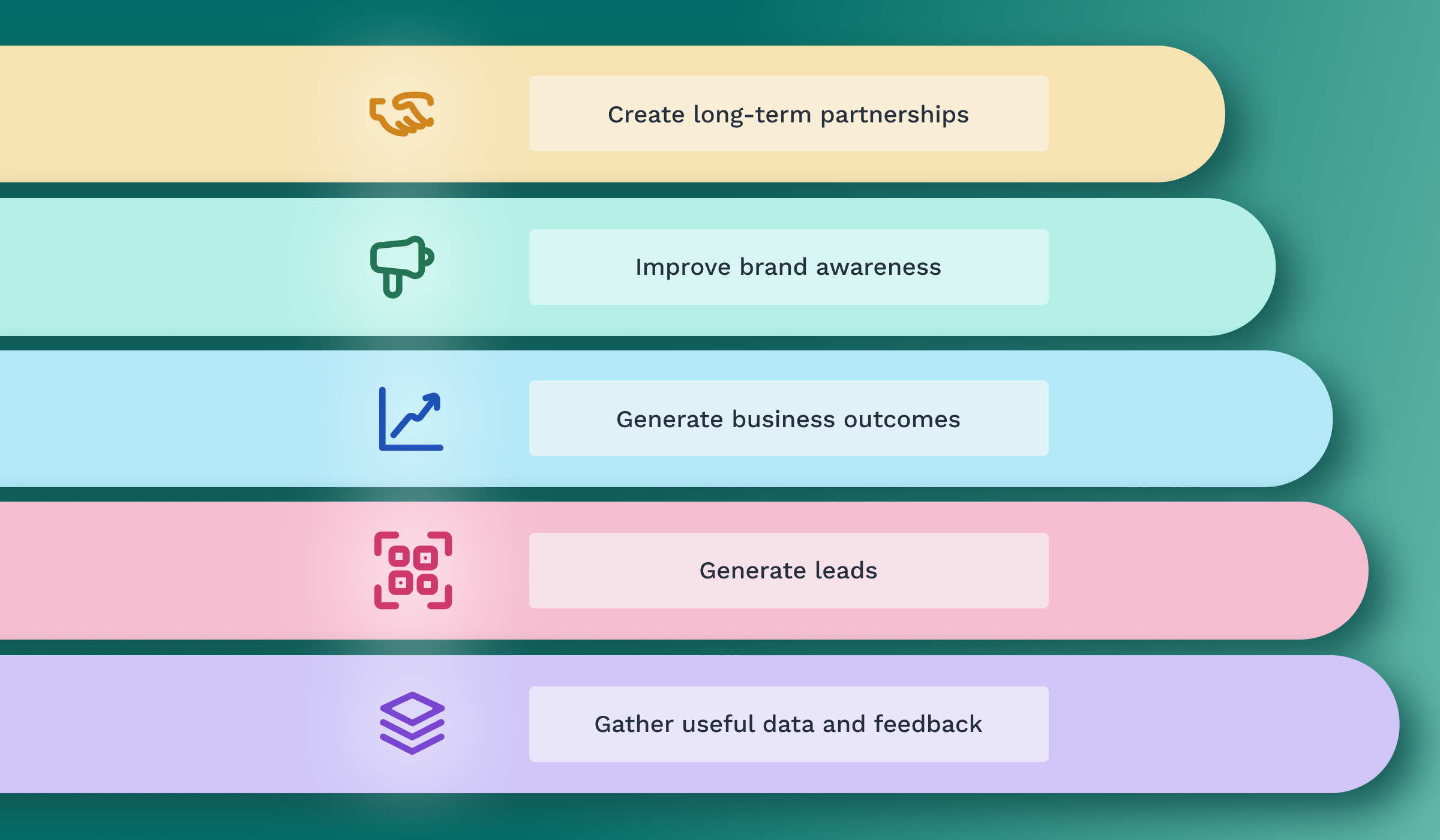Trade Show Executive Gold 100 Awards 2025: Strategic Insights Every Event Leader Should Take Home
Palm Springs became the center of the trade show world this October, as more than 200 organizers and executives gathered at The Ritz-Carlton, Rancho Mirage for Trade Show Executive’s Gold 100 Awards & Summit 2025.
The annual gathering recognized the 100 largest trade shows in the U.S., with CES® crowned the largest of 2024, Equip Exposition named The Greatest Trade Show, IMTS taking home The Marketing Genius Award, and DistribuTECH International (DTECH) earning Stickiest Show Floor.
.png)
Swapcard was proud to sponsor the event, with VP of Marketing Carlos Araujo in attendance, connecting with peers and clients.
As Carlos noted, “Being surrounded by so many passionate and innovative leaders was truly inspiring. It’s so important for our industry to celebrate achievements and the people driving them.” That collaborative spirit, celebrating excellence while sharing insights, defined the entire summit.
From navigating economic uncertainty and scaling AI with purpose, to turning audience intelligence and connection into measurable growth, here are the strategic insights every event leader should take home from this year’s Gold 100 Awards & Summit.
Prepare for Policy and Economic Whiplash
Economic volatility and political uncertainty framed much of the conversation. In his keynote, Dr. Peter Rupert, an economist at UC Santa Barbara, advised attendees to “stop listening to the news,” noting that U.S. fundamentals remain stronger than many believe. But Tommy Goodwin of the Exhibitions & Conferences Alliance brought an important counterpoint: the industry must prepare for ongoing turbulence as federal policy decisions, including a major Supreme Court ruling on tariffs expected in early 2026, could shift cost structures and supply chains.
For organizers, the message was clear: resilience requires more than optimism. The leaders in the room discussed building flexible financial models, monitoring advocacy efforts closely, and scenario planning for travel and tariff disruptions well before budgets are set. The Gold 100 set a new benchmark for executive readiness: agility is now the ultimate form of cost control.
Make AI Operate Like a Business Unit
Artificial intelligence moved from buzzword to business driver this year. A powerhouse panel featuring Amy Allen (Chief of Staff, North America, Informa Markets), Liz Irving (CEO, Clarion Events North America), and Kinsey Fabrizio (President, Consumer Technology Association/CTA) unpacked how AI is transforming their organizations, not as a marketing trick, but as a strategic capability embedded across operations.
.png)
Clarion, for instance, has integrated AI into its sales enablement system, helping the team identify warm leads faster and move opportunities through the pipeline more efficiently with multiple six-figure deals now originating from AI-generated insights. Informa has focused on cross-departmental optimization, using AI to streamline repetitive workflows in sales and marketing while also piloting an internal contest to encourage team adoption and creativity around AI tools. CTA, the organization behind CES, is applying AI to personalize attendee marketing, analyze customer behavior, and deepen understanding of show-wide engagement patterns.
Despite these advances, all three leaders echoed a crucial point: AI doesn’t replace human intelligence; it scales it. “AI is a great tool for giving you data, but you have to have human insight to make decisions,” Allen reminded the audience. That philosophy, human-led, data-informed, is what separates sustainable innovation from shiny object syndrome.
For executives, the message was unmistakable: treat AI as a business unit, not a bolt-on. The companies seeing measurable ROI are those assigning ownership, tracking metrics (time saved, conversion impact, customer satisfaction), and embedding AI governance into their operational DNA. The Gold 100 showcased a shift from curiosity to accountability. AI fluency has officially become a leadership competency.
Turn Audience Insight into a Revenue Engine
The most tangible growth stories came from organizers who turned audience data into action. Aaron Pederson, CEO of ABC Kids Expo, detailed how transparent communication steadied his exhibitor base through tariff uncertainty. When participation risked decline, his team doubled down on outreach, listening first, addressing concerns, and converting waitlisted exhibitors to fill cancellations.
That same principle of clarity paid off elsewhere. FDIC International’s simplified, all-inclusive education pass boosted conversions by 6%. At the same time, Coffee Fest leveraged user-generated content and community-driven social posts to attract roughly half its attendees as first-timers.
For organizers, these examples underscored that simplification and listening are strategic levers, not soft skills. When audience data is used to remove friction rather than add features, conversion and loyalty follow naturally.
Build Influence That Converts
Influencer partnerships, once experimental, have matured into a high-performance marketing channel. NAMM increased content views from 9.5 million in 2023 to 39.4 million in 2025, while Informa’s Build Show LIVE generated 2.2 million views, 135,000 interactions, and more than 90% exhibitor retention through an influencer-led, content-first approach.
.png)
Executives agreed that authentic influence, grounded in strategic metrics, now rivals traditional advertising in impact. The winning formula? Align creators with exhibitor objectives, quantify engagement outcomes, and treat partnerships as ongoing media investments. In other words, influence has become a measurable business function, and leadership teams are right to demand clear ROI from it.
Measure Connection as Seriously as Revenue
Even as AI and automation dominated conversation, the Gold 100 reminded everyone that connection remains the industry’s most valuable asset. In a standout Women to Watch panel, Desiree Hanson (Clarion), Sarah Wilson (Emerald), and Edwina Kulego (Informa) pointed out that success in 2026 will hinge on scaling personalization while preserving empathy.
TSE demonstrated that principle beautifully through experiential design: a Chairman’s Dinner under the stars, wellness hikes through the desert canyons, and a local Coachella Valley farm activation that literally and figuratively grounded attendees in community. These weren’t side events; they were strategic relationship-building moments engineered for depth, not density. As one attendee put it, “Connection is the new conversion.”
Exhibitor ROI. An Always-on Puzzle
Organizers face an ongoing challenge: Exhibitors are under growing pressure to demonstrate clear ROI from events, yet many still lack the marketing maturity or strategy needed to do so. Rather than an integrated, data-driven campaign, exhibiting is too often treated as a passive activity: setting up a booth, scanning badges, and hoping leads will materialize.
This “show up and wait” mindset makes it difficult for organizers to prove value and sustain year-round engagement, highlighting the need for education, enablement, and always-on strategies that help exhibitors turn participation into measurable business outcomes.
The 2026 Leadership Mandate
The 2025 Gold 100 Awards & Summit distilled the next era of leadership into one imperative: the future belongs to event leaders who can balance innovation with intention.
To lead in 2026 and beyond, organizers must anticipate policy shifts, make AI accountable, treat audience data as a growth asset, and invest in connection as seriously as they invest in revenue. Trade shows are no longer just economic engines; they are ecosystems of trust, intelligence, and human value.
Join 12,000 subscribers and unlock industry secrets.
By submitting this form, you agree to receive periodic emails on insightful content related to events and our product, and in accordance with our Privacy Policy. You can, of course, change your preferences or unsubscribe at any time.






.png)
.svg)


.svg)
.svg)
.svg)





